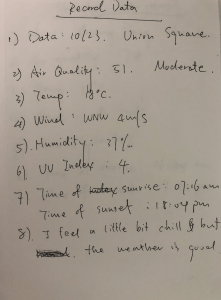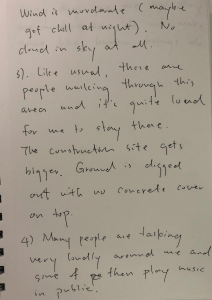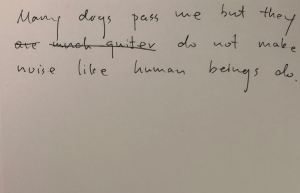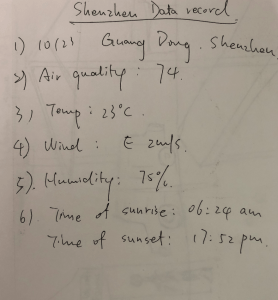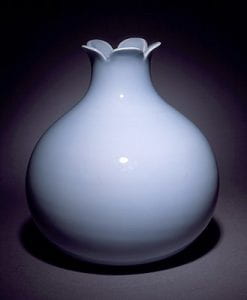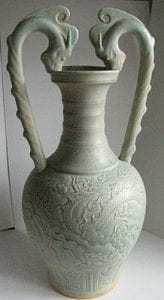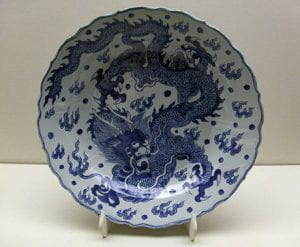1) 3rd FNBK entry:
2) Reflect on trip to Kettl:
The most inspiring/interesting part of the visit for me is definitely the process of how to make mocha tea. I have learned some tips of how to use tools to mix mocha powder with water in order to make mocha tea.
I do think it can become a long-life business since its concept of tea has already become a crucial part of culture in different backgrounds. All items it sells are environmental friendly, durable, aesthetic, and also healthy. It fits many criteria of “Long-life”, such as “environment”, “design”, “safety”, “function” etc.
Eight specific systems of air, water, energy and materials involved in Zach’s work at Kettl:
- All items in his store are imported directly from Japan growers, which needs lots of energy for transportation, such as fuel.
- When Zach boil water, he is using an electoric heater. The electricity energy transfers to heat energy.
- After putting leaves into the boiling water, he wants us to smell the smell from tea, and compare it with the smell before. Air has become a media to indicate the change of leaves.
- When we taste tea, he asks about the flavor of it. Water and air both have become mediums of bring energy inside leaves to our bodies.
- Later, he asks for volunteers to make mocha tea through its powder. He uses a brush-like that is made with bamboo to mix the powder with water in a ceramic bowl.
- While mixing the powder with warm water, the volunteers need to use their hand wrists very hard. Energy from our bodies has been transferred to mocha tea in order to mix well.
- He keeps all food in refrigerator. Electronic energy is transferred to keep temp low.
- The systems of growing tea leaves in Japan require air, right amount of water, and sun ( solar energy).
His work is all about introducing his tea related products so he is definitely a business man. However, since he is also so interested in exploring the concept of Japanese tea with more people and all of products are aesthetic and intriguing, I would say he is an artist from his heart but somehow also needs to make business through this hobby. I really like the packages of items and also the style of bowls/cups.
I do think his work is sustainable because as I mention above, most of his products are environmental friendly and quite durable, which last for long time and can be recycled eventually. I can really feel his idea about healthy life style through this tea culture.
3) What is a beautiful object/design/cultural practice that you admire from your home country that has been created/in-production or enacted for longer than fifty years?
Chinese ceramics show a continuous development since pre-dynastic times and are one of the most significant forms of Chinese art and ceramics globally. Chinese ceramics range from construction materials such as bricks and tiles, to hand-built pottery vessels fired in bonfires or kilns, to the sophisticated Chinese porcelain wares made for the imperial court and for export. Porcelain was a Chinese invention and is so identified with China that it is still called “china” in everyday English usage. Porcelain is a material made from well-chosen porcelain clay or pottery stone through technological processes like proportioning, molding, drying and firing. Although porcelain developed from pottery, the two are different in raw material, glaze and firing temperature. Compared with pottery, porcelain has tougher texture, more transparent body and finer luster. Since the Han and Tang Dynasties, porcelain has been exported worldwide. It promotes economic and cultural exchange between China and the outside world, and profoundly influences the traditional culture and lifestyle of people from other countries.
In my point of view, porcelain is an object that is very durable, versatile ( can be created in different forms ) and also artists can use it to express their own aesthetic by combining with cultural background. Porcelain can not only be used for everyday use but also can be used as decoration.
10 systems (of air, water, energy, material) that this object/practice relies on to exist :
- The three essentials for porcelain are kaolin, fuel for high-temperature kilns, and glaze.
- Porcelain is fine white clay made up of a combination of ceramic elements. There is one substance, though, that all porcelain contains in common, and that is the clay mineral kaolin. Kaolin contains varying amounts of metals such as alkali metal and aluminum, amongst other materials.
- While making the while clay, handicraftsman will need to mix all materials with water in order to get the clay that can be used for porcelain.
- Objects that is made of clay is hardened by heat and become porcelain.
- Air plays an important role in heating clay because it influences on temperature, which determines whether porcelain is successful or not.
- Ceramics may be fired in oxidizing or reducing conditions (increasing or restricting the amount of oxygen during the process). Northern porcelains were usually fired in oxidation, which results in warm, ivory-colored glazes. Southern wares were fired in reduction, producing a cool, bluish tinge.
- To create different types of porcelain, craftspeople combine these raw materials in varying proportions until they obtain the desired green (unfired) and fired properties.
- Unlike glass, however, clay is refractory, meaning that it holds its shape when it is heated. In effect, porcelain combines glass’s low porosity with clay’s ability to retain its shape when heated, making it both easy to form and ideal for domestic use. The raw material particles are reduced to the desired size, which involves using a variety of equipment during several crushing and grinding steps. Primary crushing is done in jaw crushers which use swinging metal jaws. Secondary crushing reduces particles to 0.1 inch (.25 centimeter) or less in diameter by using mullers (steel-tired wheels) or hammer mills, rapidly moving steel hammers. For fine grinding, craftspeople use ball mills that consist of large rotating cylinders partially filled with steel or ceramic grinding media of spherical shape.
- During the firing process, a variety of reactions take place. First, carbon-based impurities burn out, chemical water evolves (at 215 to 395 degrees Fahrenheit or 100 to 200 degrees Celsius), and carbonates and sulfates begin to decompose (at 755 to 1,295 degrees Fahrenheit or 400 to 700 degrees Celsius). Gases are produced that must escape from the ware. On further heating, some of the minerals break down into other phases, and the fluxes present (feldspar and flint) react with the decomposing minerals to form liquid glasses (at 1,295 to 2,015 degrees Fahrenheit or 700 to 1,100 degrees Celsius). These glass phases are necessary for shrinking and bonding the grains. After the desired density is achieved (greater than 2,195 degrees Fahrenheit or 1,200 degrees Celsius), the ware is cooled, which causes the liquid glass to solidify, thereby forming a strong bond between the remaining crystalline grains. After cooling, the porcelain is complete.
- After bisque firing, the porcelain wares are put through a glazing operation, which applies the proper coating. The glaze can be applied by painting, dipping, pouring, or spraying. Finally, the ware undergoes a firing step in an oven or kiln. After cooling, the porcelain ware is complete.
No, the process of making porcelain will not do any negative impact to climate changes since since it will not release any pollution or chemicals to air, just a little bit heat and every step is done inside.
( I have made some porcelain before in China but I do not have it with me )

